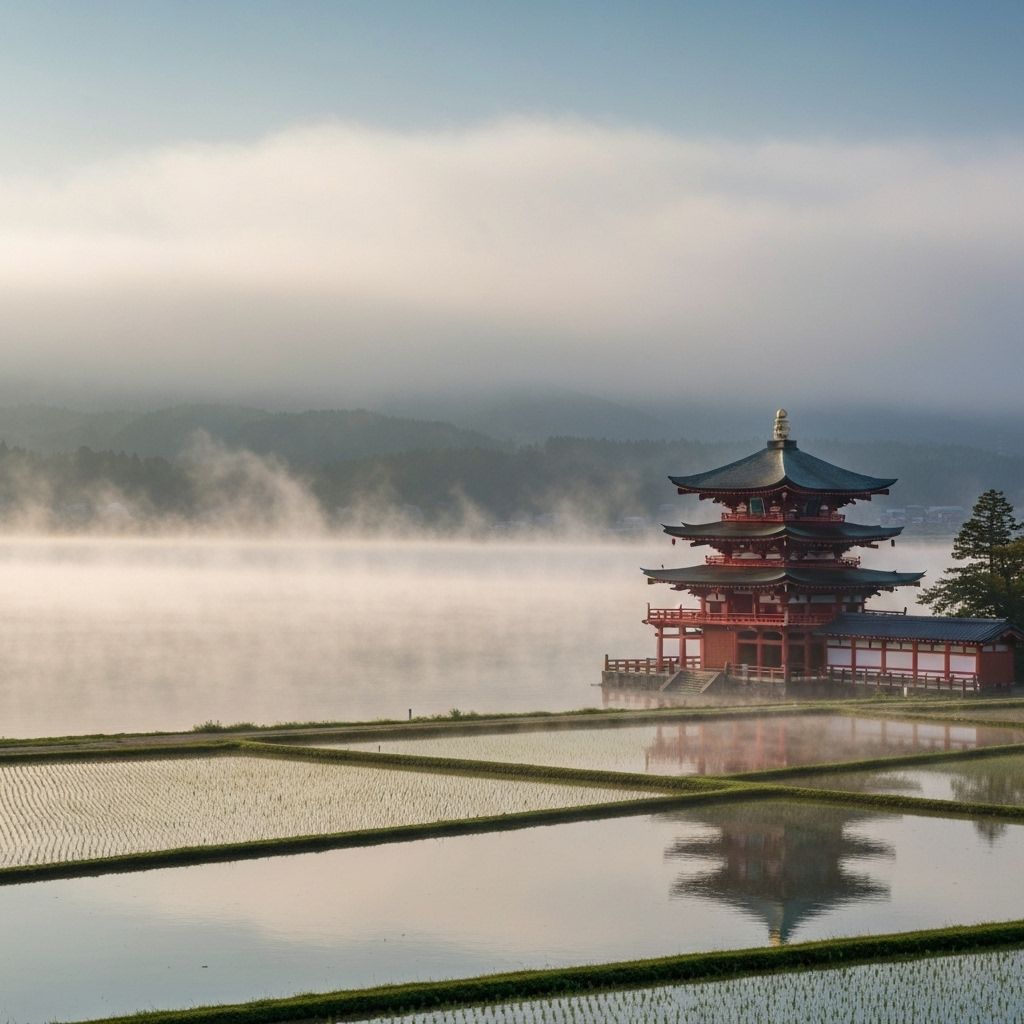The Sacred Beef of Ōmi — Japan's Oldest Wagyu Heritage
In the quiet heart of Japan, where mist rolls over Lake Biwa and temples whisper the prayers of centuries, one breed of cattle has written its story in patience — Ōmi Wagyu.
It is not just meat; it is time, devotion, and history rendered edible.
The First Wagyu — Where It All Began
Before Kobe and Matsusaka rose to fame, there was Ōmi.
Recorded in Japanese chronicles over 400 years ago, Ōmi beef (近江牛) is recognized as Japan's oldest brand of Wagyu.
During the Edo Period (1603–1868), when eating meat was restricted by Buddhist customs, Ōmi beef found a rare exception — sold secretly as a medicinal food to samurai and nobility in Kyoto.
The meat was marinated in miso to disguise its scent and traded as "Henpongan" — the "medicine of strength."
This is where the legend began — in the villages of Shiga Prefecture, nourished by rice paddies and the waters of Japan's largest lake.
A Land That Raises Legends
Ōmi cattle thrive in Shiga's serene environment — clean rivers, rice fields, mild seasons, and mineral-rich soil.
The farmers who raise them are heirs to generations of meticulous care.
Cattle are fed locally grown rice straw and barley, raised slowly for 36–48 months, allowing marbling to form naturally.
Unlike modern mass breeding, Ōmi farmers practice quiet farming — soft voices, open barns, no stress.
Because in Japan, tenderness begins long before butchery.
Flavor That Whispers, Not Shouts
If Kobe is the bold performer, Ōmi is the poet.
Its marbling is fine-grained and elegant, melting at body temperature but never overpowering.
The taste is soft, subtle, slightly sweet, leaving behind a refined aroma known as Wagyu-kō (和牛香) — a fragrance so gentle it has been described as "the perfume of purity."
When served as sukiyaki or shabu-shabu, the fat transforms into silk, coating the palate in calm warmth rather than heaviness.
It's this restraint — the art of balance — that makes Ōmi revered by Japanese chefs who prize understatement over excess.
Protected by Origin — The GI Mark of Trust
Ōmi beef holds a Geographical Indication (GI) tag from Japan's Ministry of Agriculture, Forestry and Fisheries (MAFF).
This certification ensures every cut labeled "Ōmi" originates from purebred Kuroge Washu cattle born, raised, and processed in Shiga Prefecture under strict inspection.
The GI symbol isn't just a logo — it's a seal of truth in an age of imitation meats.
It guarantees purity, traceability, and centuries of cultural continuity.
The Market of Modesty
Ōmi Wagyu remains one of Japan's most exclusive exports, with annual output far smaller than Kobe or Miyazaki.
Its scarcity is deliberate — quality over volume.
Where Kobe commands fame, Ōmi commands respect.
In Japan's domestic auctions, top-grade Ōmi A5 carcasses regularly fetch between ¥1.8–2.2 million (approx. USD 12,000–15,000), a reflection of its revered status among connoisseurs.
Why Ōmi Still Matters
Because in a world chasing louder luxuries, Ōmi stays silent — and that's its strength.
Its story embodies Japanese balance — Wa (和) — harmony between man, nature, and animal.
At Wagyu Arabiya Trading LLC, we honor this legacy by bringing true Ōmi A5 Halal Wagyu to the Middle East, preserving its temperature, tenderness, and truth.
Every shipment carries not just meat — but the soul of Japan's oldest Wagyu.
Ōmi is not for those who seek hype.
It is for those who seek heritage.
